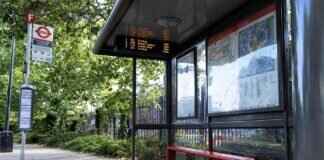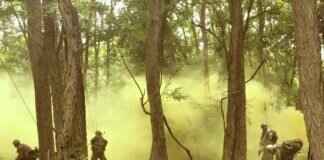The body of a Hungarian tourist, Puskas Zsolt, who had been missing since March 29 after checking into a hotel in Shillong, was discovered on April 10 on a steep slope in Meghalaya’s East Khasi Hills district. The district’s Superintendent of Police, Vivek Syiem, confirmed that a forensic team had reached the location near the village of Ramdait in the Shella area of the Sohra subdivision, bordering Bangladesh, to conduct an on-spot autopsy on the decomposed body.
Mr. Zsolt’s tragic end unfolded in a serene village that is a renowned spot for trekkers exploring the lush forests of the Shella-Sohra region. Superintendent Syiem ruled out foul play, citing the village’s peaceful nature and the familiarity of locals with regular tourist activity along various trekking paths. However, the Hungarian tourist, who suffered from rheumatoid arthritis, had ventured off the usual trekking routes, possibly leading to his demise.
“We do not suspect foul play, as the village is very peaceful and the locals are used to tourists regularly hitting several trekking trails. The Hungarian tourist, suffering from rheumatoid arthritis, went off the normal trek routes,” said Mr. Syiem on April 11, 2025. “Nobody, not even the villagers, takes that path. He may have slipped and fallen and died of hunger, but the post-mortem report will confirm everything,” he added.
Efforts to locate Mr. Zsolt were intensified after the Hungarian Embassy reported him missing on April 2, following his last sighting by children in Mawkawir and Ramdait villages on March 29. On that day, he had checked into a hotel in Shillong’s Laitumkhrah area in the early morning, checked out a few hours later, and then hired a taxi that dropped him near Sohra around noon.
The subsequent search operation involved multiple teams comprising personnel from the Sohra and adjoining police stations, the State Disaster Response Force, and local volunteers, with the assistance of the Drone Control Centre. Drones played a crucial role in narrowing down the search area, ultimately leading to the discovery of Mr. Zsolt’s remains.
As authorities work to complete the necessary procedures, including a magistrate’s inquest and the registration of an unnatural death case, they remain in close contact with the Hungarian Embassy to facilitate the repatriation of Mr. Zsolt’s body to his family. In the absence of immediate family members, arrangements will be made for his final rites in Meghalaya.
Expert Insights on Search and Rescue Operations
Search and rescue operations in challenging terrains like the Meghalayan hills require a delicate balance of technology and manpower. Drones have proven to be invaluable tools in narrowing down search areas and expediting the discovery of missing persons, as seen in the case of Puskas Zsolt.
In a statement, a search and rescue expert highlighted the importance of collaboration between local authorities, specialized teams, and cutting-edge technology in locating individuals in remote wilderness areas. The successful outcome of this operation serves as a testament to the effectiveness of coordinated efforts and the utilization of advanced resources.
Lessons Learned and Safety Precautions for Trekkers
Mr. Zsolt’s unfortunate fate serves as a poignant reminder of the potential risks associated with off-the-beaten-path trekking adventures. While exploring unfamiliar territories can be exhilarating, it is essential for trekkers to prioritize safety measures and adhere to designated trails to avoid unforeseen dangers.
Experts recommend that trekkers inform local authorities or accommodation providers of their intended routes, travel plans, and expected return times to facilitate timely response in case of emergencies. Carrying essential supplies, including food, water, first aid kits, and communication devices, can significantly enhance one’s preparedness for unexpected situations while trekking in remote areas.
As the investigation into Puskas Zsolt’s tragic demise continues, his story serves as a sobering reminder of the importance of vigilance, preparedness, and responsible trekking practices in ensuring the safety and well-being of all adventurers exploring the great outdoors.














